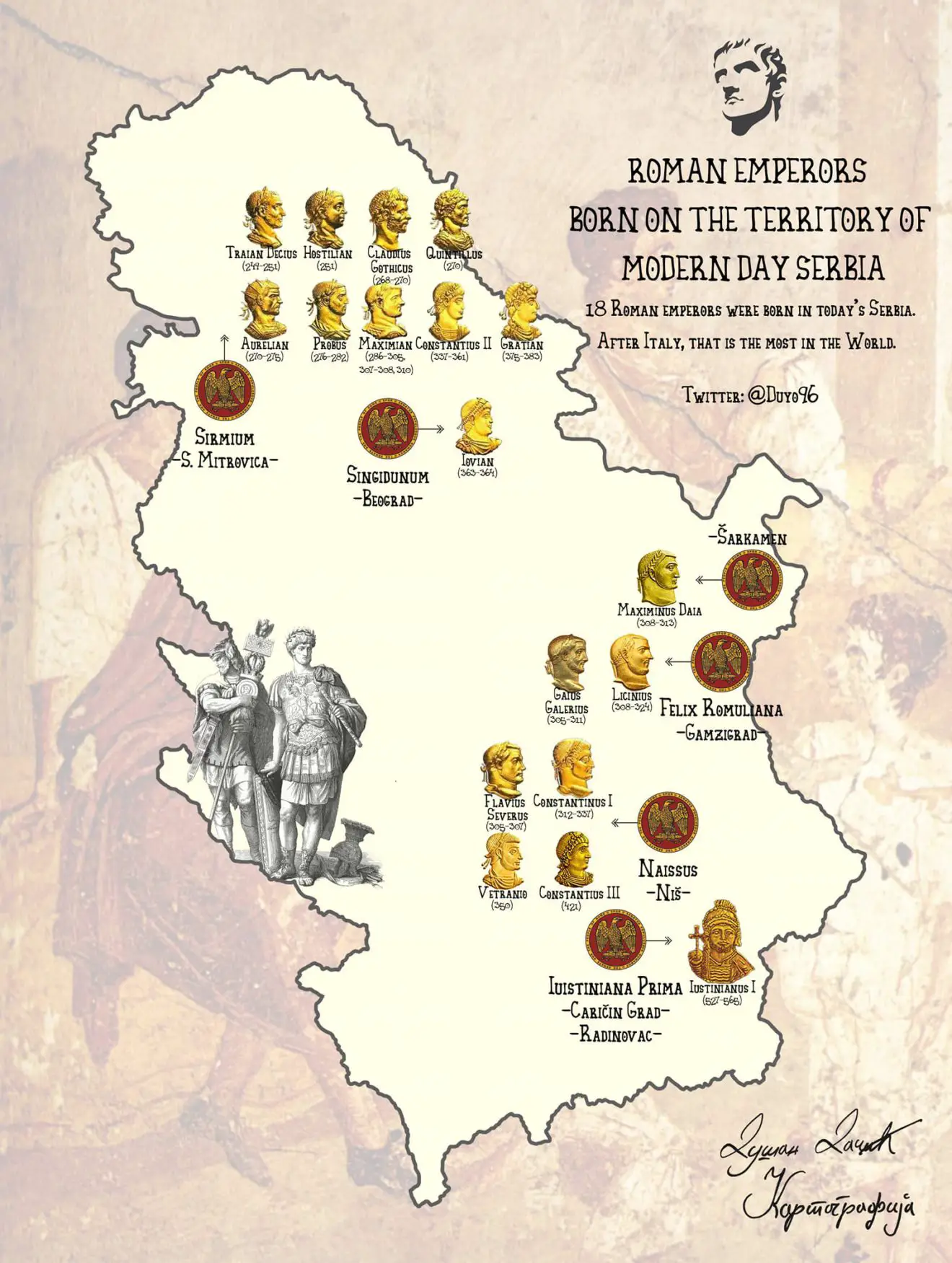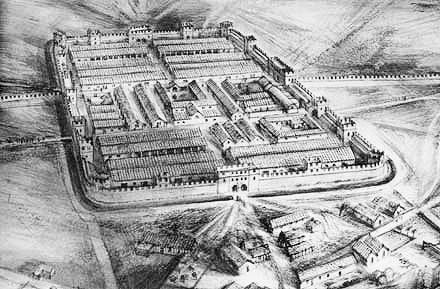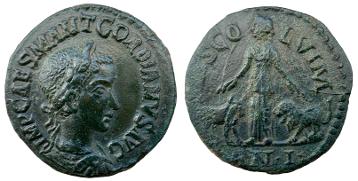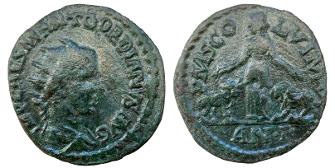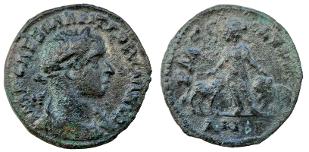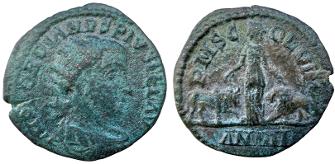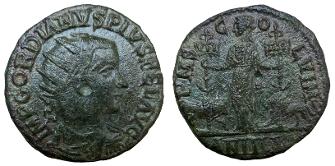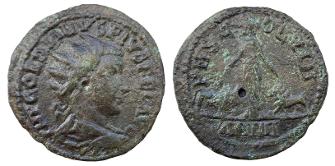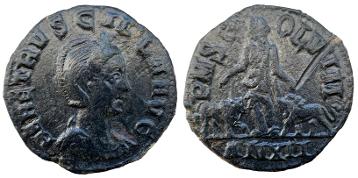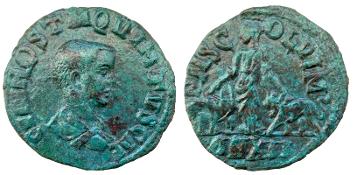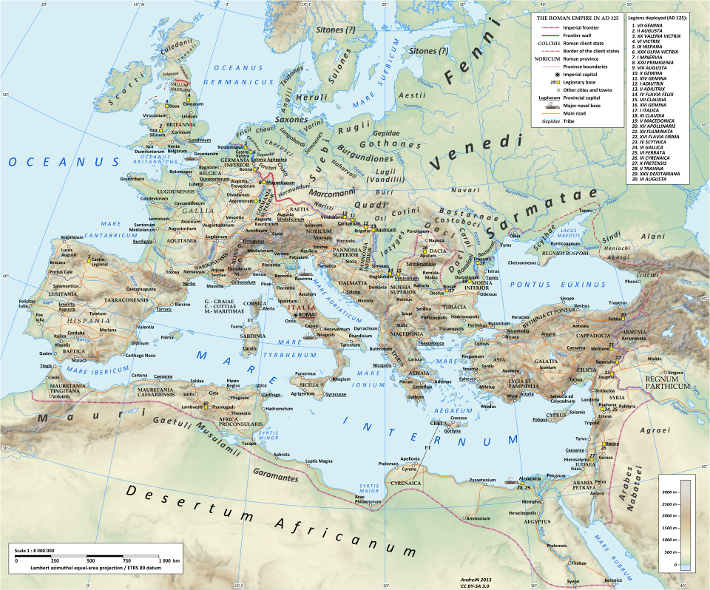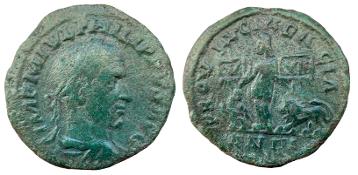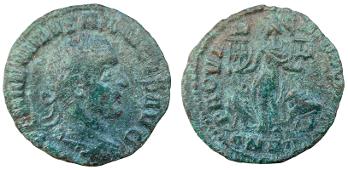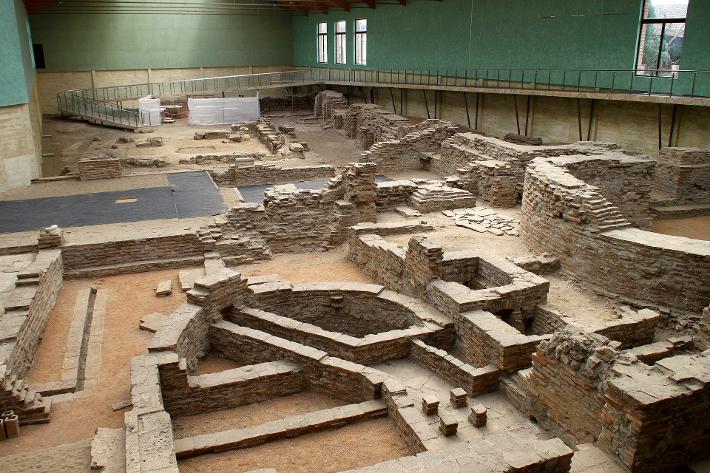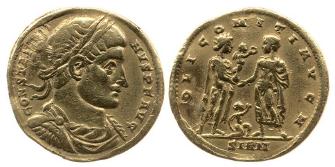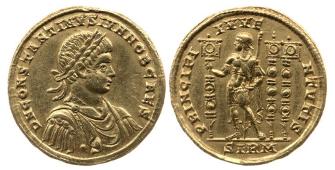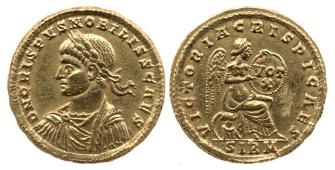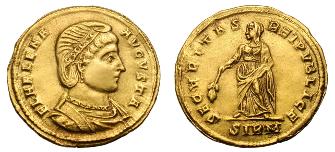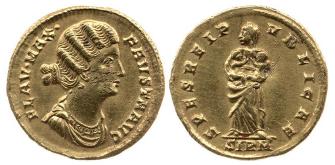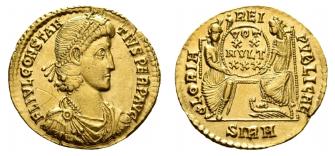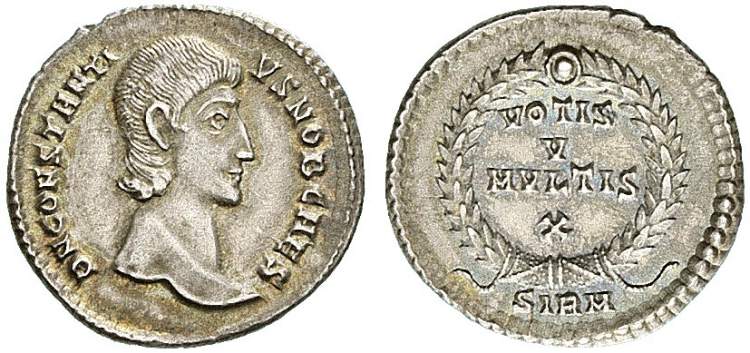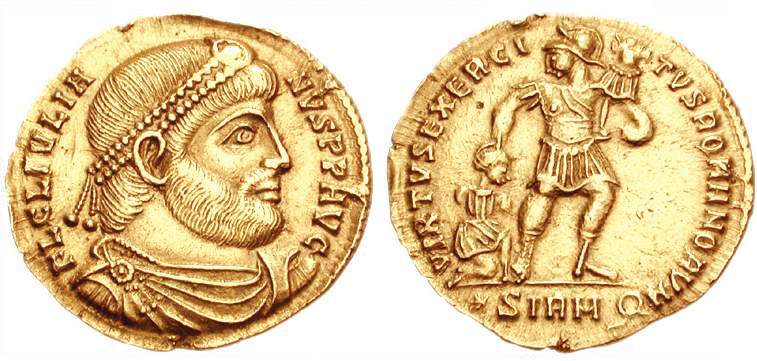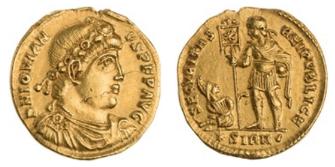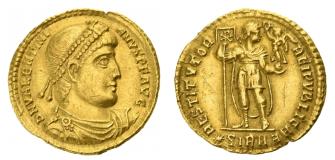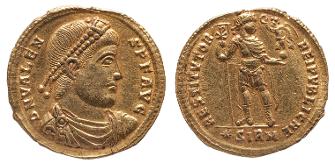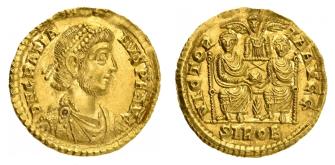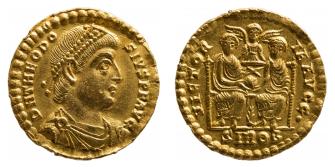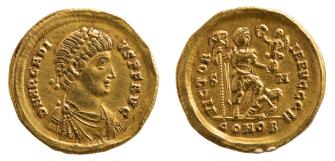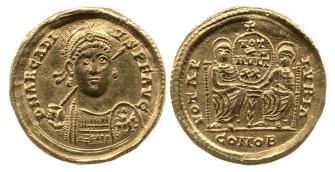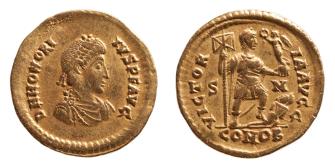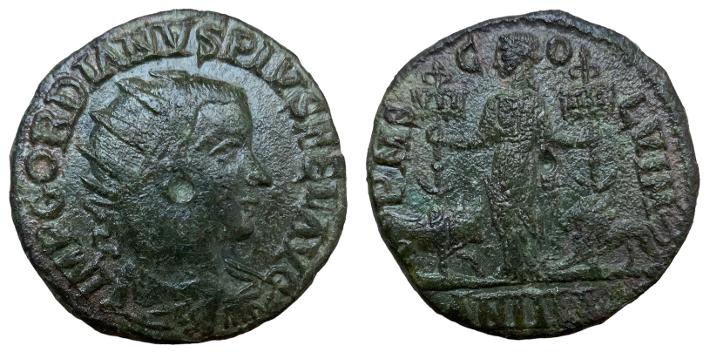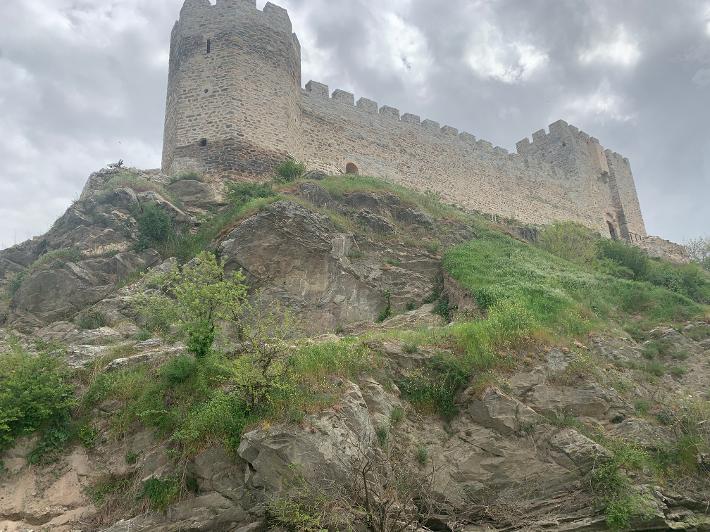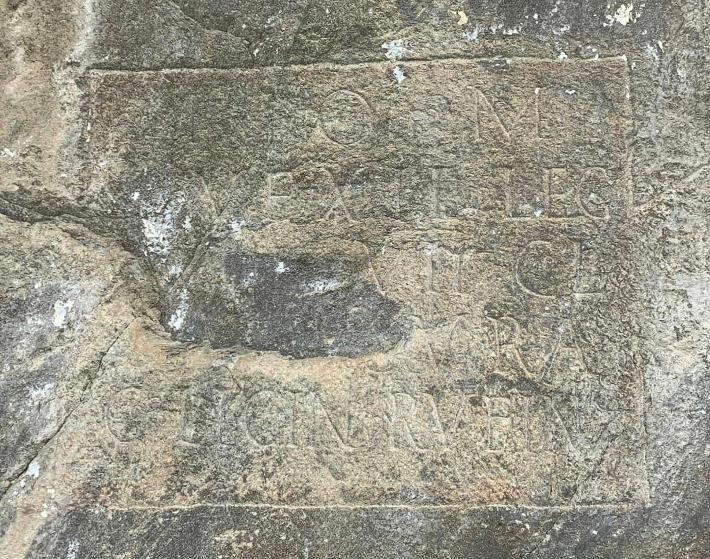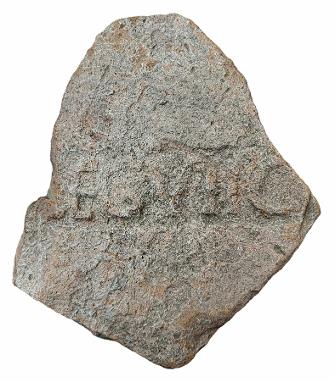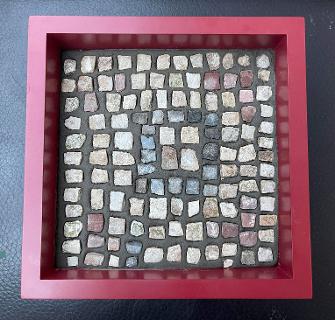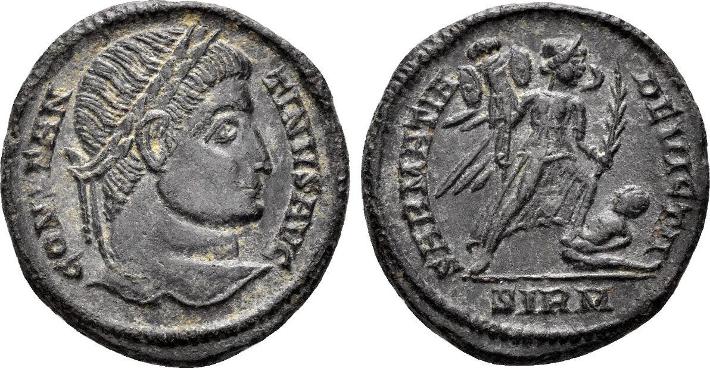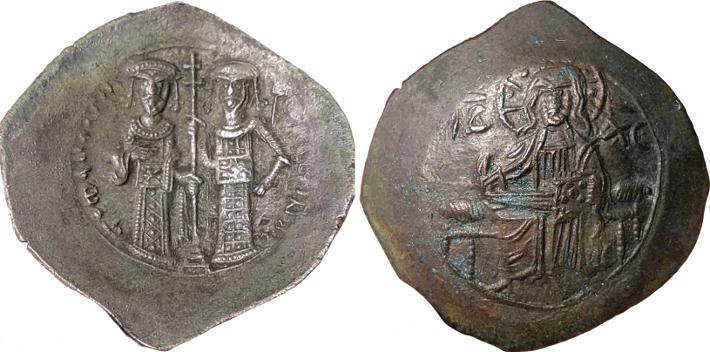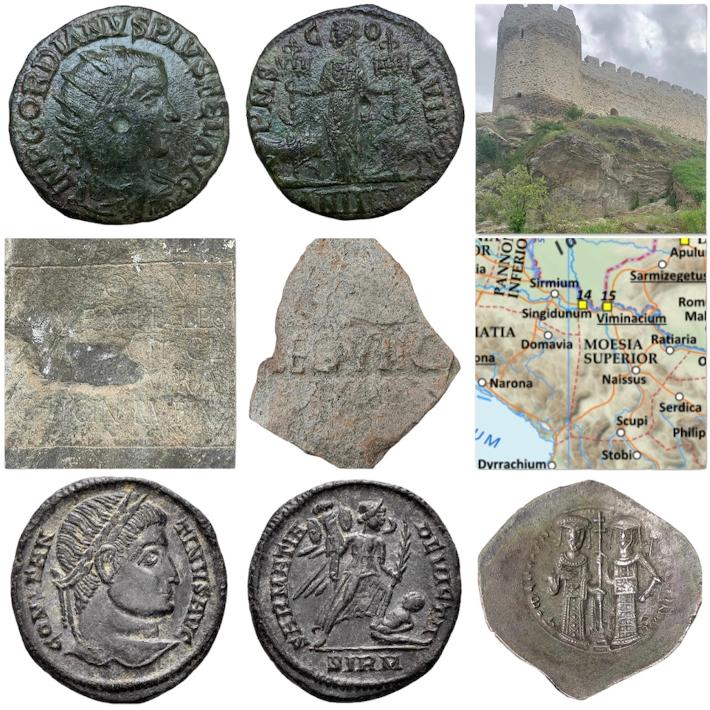SERBIAN CULTURAL HERITAGE
There are 3 groups of Roman coins minted on the territory of today's Republic of Serbia: Viminacium - today Kostolac, Dacia - today Banat and Sirmium - today Sremska Mitrovica.
Additionally, 18 Roman emperors (a fifth of all Roman emperors) are born on the territory of today's Republic of Serbia. This is the largest number of Roman emperors born in a province outside of Italy. One of them will be remembered as the person who declared Christianity official religion, Constantine the Great.
These 18 emperors are:
1. Marcus Aurelius Claudius ‘Gothicus’, or better known as Claudius II, born in Sirmium in May 214. He was a Roman emperor between 268 to 270 and is important for defeating the massive Gothic invasion at Naissus (modern Niš, Serbia).
2. Aurelian was also born in Sirmium in September 214 and ruled the Empire between 270 and 275. He opposed Quintillus and re-united the empire in 273 when it had split into 3 warring parts. Aurelian was murdered in 275 in modern Corlu, Turkey.
3. Constantine the Great, known also as Constantine I was born in February 272, in the Roman town of Naissus (modern Niš). He was an emperor for 31 years – He became the Western emperor in 306, and the sole Roman emperor in 324, and ruled until his death in 337. Constantine, I was a visionary and to this day is one of the most famous emperors. He was the founder of the city of Constantinople, the capital of the Byzantine Empire, and also the first Roman emperor who legalized Christianity.
Emperors During the Crisis of the Third Century
4. Trajan Decius was the first Roman emperor born on the territory of the Balkan Peninsula. More specifically, he was born in 201, in Budalia (modern Martinci, a village in Serbia). He ruled from 249, when he defeated and killed Philip the Arab, until 251, when he was killed by the Goths. In 250, he ordered the Decian persecution of Christians.
5. Herennius Etruscus was the first-born son of Decius. He was born in 227, near Sirmium. He was co-emperor with his father from early 251 to June 251 when he was killed along with Decius in the battle of Abritta against the Goths.
6. Hostilian was the younger son of Trajan Decius, also born in Sirmium in 230. Hostilian was elevated to a Caesar by his father, in May 251, and upon Decius’ death, he allegedly ruled along with the new emperor, Trebonianus Gallus. Hostilian died in 251, most likely from a plague.
7. Quintillus was also a native of Sirmium, and was the brother of Claudius Gothicus. He was an emperor only for a few months in 270. He was either killed by his own soldiers or committed suicide.
8. Maximian also is known as Maximian Herculius was born in Sirmium, in 250. He was a Caesar from 285 to 286, elevated by Diocletian, and an emperor from 286 to 305. He governed the territories of Spain, Italy, and Africa and was known as a persecutor of the Christian religion. Maximian killed himself in 310 on Constantine’s orders.
9. Constantius Chlorus was born in the Roman province of Dardania which used to be a territory of Moesia Superior (modern Serbia). He was born in 250, and ruled as an emperor for one year, between 305 and 306. He was the father of Constantine the Great. Before becoming an emperor, he had a distinguished military career and was elevated to a Caesar in 293.
10. Marcus Aurelius Probus was one more emperor born in Sirmium, in August 232, and ruled the Roman Empire from 276 to 282. He might have been an ethnic Dalmatian since his father’s name was ‘Dalmatius’ – most likely a ‘Dalmatian’ (ethnonym in the Croatian region of Dalmatia) and not a personal name. Although a popular and successful general, Probus was killed in a mutiny by his own soldiers.
Late Empire (Post-Constantine)
11. Jovian was born in 331, in Singidunum, a city that later evolved into modern-day Belgrade. He was a ruler of the Roman Empire between 363 and 364. He had a career in the imperial guard, being a protector-domestic under Constantius II and Julian, and later a chief of the guard. Jovian was a Christian, and as soon as he came to power, he forbid pagan practices. In his seven months of ruling, he concluded peace with the Persians and gave them all Roman territory east of the Tigris River, which caused a revolt among his soldiers.
12. Gratian was born in Sirmium, on April 18, 359. His father, Valentinian I, made Gratian and Augustus in 367 when he was only eight years old. After the death of his father in 375, he became the new emperor. Although popular, in 383, he was deserted by his troops when he went to Gaul to impede Magnus Maximus, who in a meantime was proclaimed emperor in Britain. Gratian attempted to escape but was treacherously murdered.
13. Flavius Julius Constantius, or Constantius II, the second son of Constantine the Great, was also born in Sirmium, in 317. He ruled the Roman Empire from 337 to 361. There is a detailed record of the reign of Constantius II by the historian Ammianus Marcellinus. He was in indefinite and bloody warfare with the Persian king Shāpūr II, between 338 and 350. He also promoted Arian Christianity and persecuted pagans.
14. Maximinus Daia, born in Felix Romuliana (modern Gamzigrad in Serbia) in 270, was a co-emperor of Constantine I, between 310 and 313. He became involved in the Civil wars of the Tetrarchy which were a series of conflicts between Roman co-emperors. These wars were the end of the Third Century Crisis. Maximinus Daia was defeated by Licinius.
15. Licinius was also native of Felix Romuliana, was emperor between 308 and 324, and ruled jointly with Galerius, 308-311, Maximinus, 311-313 and Constantine I, 313-324. Most of the time, he was Constantine’s rival and in 325 was abdicated and murdered by him.
16. Vetranio was a co-emperor of Constantius II, for nine months in 350. He was born in Moesia. In 360, he committed suicide.
17. Constantius III was born in Naissus. He ruled the Empire from February to September, 421, jointly with Honorius. Died suddenly in September, 421.
18. Justinianus I 527-565 was born in Justiniana Prima (Caričin Grad).
On the territory of Serbia today we have the imperial city (Sirmium), provincial capitals (Sirmium and Viminacium), imperial residences and villas Felix Romuliana (Gamzigrad), Charkamen (Šarkamen), Mediana and Justiniana Prima (Caričin Grad), as well as borders strengthened by many cities, legionary and auxiliary fortifications Singidunum (Belgrade), Diana, Pontes, Naisus (Niš). These sites represent a huge ancient heritage.
First coins minted on the territory of todays Republic of Serbia are Roman coins minted in Viminacium today Kostolac.
Viminacium city was a major city and a military camp of the Roman province of Moesia (today's Serbia), and the provincial capital and Moesia Superior.
It is located 12 km (7.5 mi) from the modern town of Kostolac in Eastern Serbia, dates back to the 1st century AD and at its peak it is believed to have had 40,000 inhabitants, making it one of the biggest cities in the Balkans at that time.
It became a colony with minting privilege in 239 AD, during the rule of Gordian III (238-244), and housed the Legion VII and Legion IV that appears on his coins.
Minting only lasted 16 years, from 239-255:
Gordian III / ANNO I - V (239-244)
AN I, used from July 239 until July 240.
AN II, used from July 240 until July 241.
AN III, used from July 241 until July 242.
AN IIII, used from July 242 until July 243.
AN V, used from July 243 until February 244.
Philip I / ANNO V - XI (244-249)
AN V, used from February/march 244 until July 244.
AN VI, used from July 244 until July 245.
AN VII, used from July 245 until July 246.
AN VIII, used from July 246 until July 247.
AN VIIII, used from July 247 until July 248.
AN X, nothing was struck.
AN XI, used from July 249 until August 249.
Otacilia / ANNO V - VIIII (244-248)
(The wife of Philip I).
AN VI, used from July 245 until 246.
AN VIII, used from July 247 until July 248.
Philip II / ANNO V - XI (244-249)
AN VI, used from July 244 until July 245.
AN VII, used from July 245 until July 246.
AN VIII, used from July 246 until July 247.
AN VIIII, used from July 247 until July 248.
AN X, nothing was struck.
AN XI, probably nothing was struck in the name of Philip II.
Trajan Decius / AN XI-XII (249-251)
AN XI, used from August/September 249 until July 250.
AN XII, used from July 250 until May/June 251.
Herennia Etruscilla/AN XI-XII (249-251)
(The wife of the emperor Trajan Decius).
AN XI, used from August/September 249 until July 250.
AN XII, used from July 250 until May/June 251.
Herennius Etruscus/AN XI-XII (249-251)
(The eldest son of the emperor Trajan Decius).
AN XII, used from July 250 until May/June 251.
Hostilian / AN XI - XIII (249-251)
(The youngest son of the emperor Trajan Decius and Herennia Etruscilla).
AN XII, used from July 250 until July 251.
AN XIII, used from July 251 until August 251.
Trebonian Gallus/AN XII-XIV (251-252)
AN XII, used from June/July 251 until July 251.
AN XIII, used from July 251 until July 252.
AN XIV, used from July 252 until December 252 or January 253.
Volusian / AN XII - XIV (251 - 252)
(The son of the emperor Trebonianus Gallus).
AN XII, used from July 251 until August 251.
AN XIII, used from July 251 until July 252.
Aemilius Aemilian / AN XIV (252/253)
AN XIV, used from December 252 or January 253 until April/May 253.
Valerian / AN XIV-XVI (253-255)
AN XIV, used from May/June 253 until July 253.
AN XV, used from July 253 until July 254.
AN XVI, used July 254 until July 255.
Mariniana / AN XIV - XVI (253 - 255)
(The wife of Valerian and the mother of Gallienus).
AN XV, used from July 253 until July 254
AN XVI, used from July 254 until July 255.
Gallienus / AN XIV - XVI (253 - 255)
(The son of Valerian and Egnatia Marinianae).
AN XVI, used from July 254 until July 255.
We have 8 examples to show:
Roman emperor Gordian III 238-244 Viminacium Moesia Superior
Copper Sestertius ANNO I - year 239/240
30mm, 19.033g
Obverse: Bust of Gordian to the right with laurel wreath, part of paludamentum (cloak, cape) visible on the shoulder worn over armoured breast plate. Latin description: IMP CAES M ANT GORDIANVS AVG (IMPERATOR CAESAR MARCVS ANTONIVS GORDIANVS AVGVSTVS - EMPEROR, CAESAR MARCUS ANTONIUS GORDIANUS AUGUSTUS).
Reverse: Woman (Moesia) standing with head to the left holding her right hand over a bull and her left hand over a lion. Latin description: PMSCO - LVIM (PROVINCIA MOESIA SVPERIOR COLONIA VIMINACIVM - PROVINCE MOESIA SUPERIOR COLONY VIMINACIUM).
Exergue: AN •I• (ANNO •I•) - year 1 (239/240).
Reference: Pick 71 - Martin 1.01.1 - Varbanov 102
Roman emperor Gordian III 238-244 Viminacium Moesia Superior
Copper Dupondius ANNO I - 239/240
23mm, 6.346g
Obverse: Bust of Gordian to the right with radiate crown, part of paludamentum (cloak, cape) visible on the shoulder worn over armoured breast plate. Latin description: IMP CAES M ANT GORDIANVS AVG (IMPERATOR CAESAR MARCVS ANTONIVS GORDIANVS AVGVSTVS - EMPEROR, CAESAR MARCUS ANTONIUS GORDIANUS AUGUSTUS).
Reverse: Woman (Moesia) standing with head to the left holding her right hand over a bull and her left hand over a lion. Latin description: PMSCO - LVIM (PROVINCIA MOESIA SVPERIOR COLONIA VIMINACIVM - PROVINCE MOESIA SUPERIOR COLONY VIMINACIUM).
Exergue: AN •I• (ANNO •I•) - year 1 (239/240).
Reference: Pick 72 - Martin 1.02.1 - Varbanov 104
Roman emperor Gordian III 238-244 Viminacium Moesia Superior
Copper As ANNO I - 239/240
21mm, 5.115g
Obverse: Bust of Gordian to the right with laurel wreath, part of paludamentum (cloak, cape) visible on the shoulder worn over armoured breast plate. Latin description: IMP CAES M ANT GORDIANVS AVG (IMPERATOR CAESAR MARCVS ANTONIVS GORDIANVS AVGVSTVS - EMPEROR, CAESAR MARCUS ANTONIUS GORDIANUS AUGUSTUS).
Reverse: Woman (Moesia) standing with head to the left holding her right hand over a bull and her left hand over a lion. Latin description: PMSCO - LVIM (PROVINCIA MOESIA SVPERIOR COLONIA VIMINACIVM - PROVINCE MOESIA SUPERIOR COLONY VIMINACIUM).
Exergue: AN •I• (ANNO •I•) - year 1 (239/240).
Reference: Pick 73 - Martin 1.03.1 - Varbanov 103
Roman emperor Gordian III 238-244 Viminacium Moesia Superior
Copper Dupondius ANNO III - 241/242
24mm, 8.121g
Obverse: Bust of Gordian to the right with radiate crown, part of paludamentum (cloak, cape) visible on the shoulder worn over armoured breast plate. Latin description: IMP GORDIANVS PIVS FEL AVG (IMPERATOR GORDIANVS PIVS FELIX AVGVSTVS - EMPEROR GORDIAN DUTIFUL WISE AUGUSTUS).
Reverse: Woman (Moesia) standing with head to the left holding her right hand over a bull and her left hand over a lion. Latin description: PMSCOLVIM (PROVINCIA MOESIA SVPERIOR COLONIA VIMINACIVM - PROVINCE MOESIA SUPERIOR COLONY VIMINACIUM).
Exergue: AN III (ANNO III) - year 3 (241/242).
Reference: Pick 82 - Martin 1.29.1 - Varbanov 116
Roman emperor Gordian III 238-244 Viminacium Moesia Superior
Copper Dupondius ANNO IIII - year 242
22mm, 7.857g
Obverse: Bust of Gordian to the right with radiate crown, part of paludamentum (cloak, cape) visible on the shoulder worn over armoured breast plate. Latin description: IMP GORDIANVS PIVS FEL AVG (IMPERATOR GORDIANVS PIVS FELIX AVGVSTVS - EMPEROR GORDIAN DUTIFUL WISE AUGUSTUS).
Reverse: Moesia standing facing left, between bull to left and lion to right, holding vexillum marked VII in right hand and vexillum marked IIII in left hand, standing for 7th and 4th Roman legion. Latin description: PMS C O L VIM (PROVINCIA MOESIA SVPERIOR COLONIA VIMINACIVM - PROVINCE OF MOESIA SUPERIOR COLONY OF VIMINACIUM).
Exergue: AN IIII (ANNO IIII) - year 4 (242).
Reference: Pick 86 - Martin 1.39.1 - Varbanov 124
Roman emperor Gordian III 238-244 Viminacium Moesia Superior
Copper Dupondius ANNO IIII - 242/243
25mm, 7.565g
Obverse: Bust of Gordian to the right with radiate crown, part of paludamentum (cloak, cape) visible on the shoulder worn over armoured breast plate. Latin description: IMP GORDIANVS PIVS FEL AVG (IMPERATOR GORDIANVS PIVS FELIX AVGVSTVS - EMPEROR GORDIAN DUTIFUL WISE AUGUSTUS).
Reverse: Woman (Moesia) standing with head to the left holding her right hand over a bull and her left hand over a lion. No draping over her left arm. Latin description: PMSC - OLVIM (PROVINCIA MOESIA SVPERIOR COLONIA VIMINACIVM - PROVINCE MOESIA SUPERIOR COLONY VIMINACIUM).
Exergue: AN IIII (ANNO IIII) - year 4 (242/243).
Reference: Pick 84 - Martin 1.32.1 - Varbanov 119
Empress Annia Cupressenia Herennia Etruscilla the wife of Traian Decius, Roman emperor 249-251
Viminacium Moesia Superior
Copper Sestertius ANNO XII - 250/251
27mm, 12.593g
Obverse: Bust of Herennia Etruscilla to the right with diadem in her hair. The dress visible over her shoulders is draped different this time. The hair of the empress is folded backwards over the back of her head and pinned down. Latin description: HER ETRVSCILLA AVG (HERENNIA ETRVSCILLA AVGVSTA - HERENNIA ETRUSCILLA AUGUSTA).
Reverse: Woman (Moesia) standing with head to the left holding her right hand over a bull and her left hand over a lion. Latin description: PMSC - OLVIM (PROVINCIA MOESIA SVPERIOR COLONIA VIMINACIVM - PROVINCE MOESIA SUPERIOR COLONY VIMINACIUM).
Exergue: AN XII (ANNO XII) - year 12 (250/251).
Reference: Pick 137 var. - Martin 3.34.1 - Varbanov 179
Quintus Herennius Etruscus Messius Decius (227-251), the eldest son of the emperor Traian Decius.
Viminacium Moesia Superior
Copper Sestertius ANNO XII - 250/251
25mm, 11.956g
Obverse: Bust of Herennius to the right with radiate crown, part of paludamentum (cloak, cape) visible over the shoulder. Latin description: Q H ETR MES DEC CAES (QVINTVS HERENNIVS ETRVSCVS MESSIVS DECIVS CAESAR - QUINTUS HERENNIUS ETRUSCUS MESSIUS DECIUS CAESAR).
Reverse: Woman (Moesia) standing with head to the left holding her right hand over a bull and her left hand over a lion. Latin description: PMSC - OLVIM (PROVINCIA MOESIA SVPERIOR COLONIA VIMINACIVM - PROVINCE MOESIA SUPERIOR COLONY VIMINACIUM).
Exergue: AN XII (ANNO XII) - year 12 (250/251).
Reference: Pick 142 - Martin 3.42.1 - Varbanov 184
Dacia was the land inhabited by the Dacians, its core in Transylvania, stretching to the Danube in the south, the Black Sea in the east, and the Tisza in the west. The Carpathian Mountains were located in the middle of Dacia. It includes present-day countries of Romania, as well as parts of Serbia (Banat), Moldova, Bulgaria, Hungary, Slovakia and Ukraine.
The mint in the province of Dacia was opened in 246 in the reign of the emperor Philip I. The coins struck in this mint resemble very much the coins struck in Viminacium and also have Latin texts. The mint in Dacia struck copper (bronze) coins until the year 256/257
Minting only lasted 11 years, from 246-257:
Philip I / ANNO I - III (246-249)
AN I, used from July 246 until July 247.
AN II, used from July 247 until July 248.
AN III, used from July 248 until July 249.
Otacilia / ANNO I - III (246-249)
(The wife of Philip I).
AN I, used from July 246 until July 247.
AN II, used from July 247 until July 248.
AN III, used from July 248 until July 249.
Philip II / ANNO I - III (246-249)
AN I, used from July 246 until July 247.
AN II, used from July 247 until July 248.
AN III, used from July 248 until July 249.
Trajan Decius / AN IIII-V (249-251)
AN IIII, used from August/September 249 until July 250.
AN V, used from July 250 until May/June 251.
Herennia Etruscilla / AN IIII - V (249-251)
(The wife of the emperor Trajan Decius).
AN IIII, used from August/September 249 until July 250.
AN V, used from jolly 250 until May/June 251.
Herennius Etruscus/AN IIII-V (249-251)
(The eldest son of the emperor Trajan Decius).
AN V, used from July 250 until May/June 251.
Hostilian / AN IIII - V (249-251)
(The youngest son of the emperor Trajan Decius and Herennia Etruscilla).
AN V, used from July 250 until May/June 251.
Trebonianus Gallus / AN V (251)
AN V, used from June/July 251 until July 251.
Volusian / AN V (250/251)
(The son of the emperor Trebonianus Gallus).
AN VI, used from July 251 until August 251.
Aemilius Aemilian / AN VIII (252/253)
AN VII, used from July 252 until August/September 253.
AN VIII, used from July 253 until August/September 253.
Valerian / AN VIII-XI (253-257)
AN VIII, used from July 253 until July 254.
AN VIIII, used from July 254 until July 255.
AN X, used from July 255 until July 256.
AN XI, used from July 256 until July 257.
Gallienus / AN VIII-XI (253-257)
(The son of Valerian and Egnatia Marinianae).
AN VIII, used from July 253 until July 254.
AN VIIII, used from July 254 until July 255.
AN X, used from July 255 until July 256.
AN XI, used from July 256 until July 257.
We have 2 examples to show:
Roman emperor Philip I 244-249
Dacia today part of Banat Serbia
Copper Sestertius ANNO III - 248/249
28mm, 16.550g
Obverse: Bust of Philip I to the right with laurel wreath, part of paludamentum (cloak, cape) visible on the shoulder worn over armoured breast plate. Latin description: IMP M IVL PHILIPPVS AVG (IMPERATOR MARCVS IVLIVS PHILIPPVS AVGVSTVS - EMPEROR MARCUS IULIUS PHILIPPUS AUGUSTUS).
Reverse: Woman (Dacia) to the left with Phrygian cap on her head. On the left side stands an eagle with spreaded wings and a laurel wreath in its beak. On the right a lion walking to the left. In her left hand Dacia is holding a vexilum with the Roman numeral XIII and in the right hand a Dacian sword. A vexilum with the Roman numeral V is placed in the ground in front of her. Latin description: PRO- VINCIA DACIA - (PROVINCE DACIA).
Exergue: AN III (ANNO III) - year 3 (248/249).
Reference: Pick 16 - Martin 2.67.24 - Varbanov 11
Roman emperor Traian Decius 249-251
Dacia today part of Banat Serbia
Sestertius ANNO V - 250/251
25mm, 9.732g
Obverse: Bust of Decius to the right with laurel wreath, part of paludamentum (cloak, cape) visible on the shoulder worn over armoured breast plate. The portrait on this coin still has some of the looks of his predecessor Philip. Latin description: IMP TRAIANVS DECIVS AVG (IMPERATOR TRAIANVS DECIVS AVGVSTVS - EMPEROR TRAIANUS DECIUS AUGUSTUS).
Reverse: Woman, probably Pax or Dacia depicted as Pax, to the left. In her left arm she is holding a scepter and in her upright right hand she is holding a branch. On the left side stands an eagle with spreaded wings and a laurel wreath in its beak. On the right a lion walking to the left. Latin description: PROVIN - C - IA DACIA - (PROVINCE DACIA).
Exergue: AN V (ANNO V) - year 5 (250/251).
Remark: A coin type like this with Pax or Dacia depicted as Pax was also struck at Viminacium.
Reference: Pick 40 - Martin 3.56 - Varbanov 45
Sirmium city had more than 100,000 inhabitants and was one of the largest cities of its time.
The city certainly flourished in the third and fourth century, when no less than ten Sirmians rose to the imperial power. The first of these was Decius (r.249-251), whose sons Herennius Decius and Hostilian briefly reigned in 251. Claudius II (r.268-270) was not only born in this city, but died there too. His brother Quintillus reigned in 270, but was almost immediately replaced by his fellow-Sirmian Aurelian (r. 270-275). Probus (r.276-282) was born and murdered in Sirmium, while Maximian (r. 285-310), Constantius II (r.337-361), and Gratian (r.367-383) were from the city as well.
Sarcophagus of a couple; the woman is depicted with a dove, which may signify that she was a Christian
Sarcophagus of a couple; the woman is depicted with a dove, which may signify that she was a Christian
The city, the capital of what was now known as Pannonia Secunda, became an imperial residence during the reign of Licinius. Remains of the palace have been identified in the southeast of Sremska Mitrovica: a basilica and a hippodrome. On other places, two cemeteries, a grain silo, and baths have been identified, while the course of the city wall can be followed for quite some distance. Sirmium was the site of one of Licinius' defeats against Constantine the Great.note
When in c.318 the Roman Empire was divided into four regions, Sirmium became the capital of the Prefecture of Illyricum. Three legions, IIII Flavia, V Iovia and VI Herculia, protected the city against Germanic tribes in the north. Their bases were at Singidunum, Castellum Onagrinum, and Teutoburgium.
First emperor to mint coins in Sirmium was Constantine I also known as Constantine the Great who was Roman emperor from 306 to 337 and the last emperor, who became emperor in Sirmium, to mint coins in Sirmium as well as the last emperor of the united Roman Empire was Theodosius I (378–395).
On the territory of Serbia today we have the imperial city (Sirmium), provincial capitals (Sirmium and Viminacium), imperial residences and villas Felix Romuliana (Gamzigrad), Charkamen (Šarkamen), Mediana and Justiniana Prima (Caričin Grad), as well as borders strengthened by many cities, legionary and auxiliary fortifications Singidunum (Belgrade), Diana, Pontes, Naisus (Niš). These sites represent a huge ancient heritage.
Minting lasted 75 years, from 320-395:
Constantine I or Constantine The Great 320 - 321
Gold Solidus of Sirmium
Obverse: CONSTANTI-NVS P F AVG or CONSTANT-INVS P F AVG: Bust of Constantine I, laureate, draped, cuirassed, facing right.
Reverse: SOLI COMITI AVG N // SIRM: Sol, chlamys spread, standing right, presenting Victory on globe to Constantine I, draped, cuirassed, standing left; between them, kneeling captive, raising hands toward emperor.
Constantine II 320 - 321
1 1/2 Gold Solidus of Sirmium
Obverse: D N CONSTANTINVS IVN NOB CAES: Bust of Constantine II, laureate, draped, cuirassed, facing right.
Reverse: PRINCIPI - IVVE-NTVTIS // SIRM: Constantine II, draped, cuirassed, standing left, holding standard in right hand and vertical spear in left hand; behind, two standards.
Crispus 322 - 323
Gold Solidus of Sirmium
Obverse: D N CRISPVS NOBILISS CAES: Bust of Crispus, laureate, draped, cuirassed, facing left.
Reverse: VICTORIA CRISPI CAES // SIRM: Victory, winged, draped, seated right on cuirass with shield beside, holding shield inscribed VOT/X.
Fausta 324 - 325
Gold Solidus of Sirmium
Obverse: FLAV MAX - FAVSTA AVG: Bust of Fausta waved hair, mantled, facing right.
Reverse: SPES REI P-VBLICAE // SIRM: Salus, veiled, draped, standing front, head left, holding two children in her arms.
Constantius II 351 - 355
Gold Solidus of Sirmium
Obverse: FL IVL CONSTAN-TIVS PERP AVG: Bust of Constantius II, pearl-diademed, draped, cuirassed, facing right.
Reverse: GLORIA - REI - PVBLICAE: Roma, helmeted, draped, enthroned front, and Constantinopolis, draped, enthroned left, head left, supporting a shield inscribed VOT/XX/MVLT/XXX; Roma holding spear in left hand; Constantinopolis holding sceptre in left hand, her right foot on prow.
Constantius Gallus 351-355
Silver Siliqua of Sirmium. 21mm, 3.03 g.
Obverse: DN CONSTANTIVS NOB CAES, Bust of Constantius Gallus, facing right.
Reverse: VOTIS-V-MVLTIS-X in four lines within wreath. Mintmark SIRM.
Julian II 355-361
Gold Solidus of Sirmium.
Obverse: FL CL IVLIA-NVS PP AVG, pearl-diademed, draped, cuirassed bust facing right (slightly larger bust than RIC 96).
Reverse: VIRTVS EXERCITVS ROMANORVM, soldier standing right, head left, holding trophy over left shoulder and placing hand on head of kneeling captive. Mintmark star-SIRM-wreath.
Jovian 363 - 364
Gold Solidus of Sirmium
Obverse: D N IOVIAN-VS P F P AVG: Bust of Jovian, laureate, rosette-diademed, draped, cuirassed, facing right.
Reverse: SECVRITAS - REI PVBLICAE: Jovian, diademed, draped, cuirassed, standing front, head left, holding standard with Chi-Rho on banner in right hand and globe in left hand; to left, bound and seated captive, wearing a pointed cap, head turned toward emperor.
Valens 364
Gold Solidus of Sirmium.
Obverse: DN VALENS P F AVG, pearl-diademed, draped and cuirassed bust facing right.
Reverse: RESTITVTOR REIPVBLICAE, emperor standing facing, head right, holding labarum and Victory on globe. Mintmark SIRM.
Gratian 378 - 383
Gold Solidus of Sirmium.
Obverse: D N GRATIA-NVS P F AVG: Bust of Gratian, pearl-diademed, draped and cuirassed, facing right.
Reverse: VICTOR-IA AVGG. Two emperors, of whom the one on the right is the smaller, seated facing on throne, together holding globe. Behind and Between them a Victory with outspread wings; below, a palm-branch. The emperors have both legs draped. SIROB below.
Theodosius I 378 - 383
Gold Solidus of Sirmium.
Obverse: D N THEODO-SIVS P F AVG: Bust of Theodosius I, pearl-diademed, draped and cuirassed, facing right.
Reverse: VICTOR-IA AVGG•. Two emperors, of equal size, seated facing on throne, together holding globe. Behind and Between them a Victory with outspread wings; below, a palm-branch. The emperors have both legs draped. SMOB below.
Arcadius 393 - 395
Gold Solidus of Sirmium.
Obverse: D N ARCADI-VS P F AVG: Bust of Arcadius, helmeted, pearl-diademed, cuirassed, facing front, holding spear in right hand behind head and shield decorated with horseman on left arm.
Reverse: VOTA P-LVRIA: Two emperors, nimbate, enthroned, facing front, holding between them a shield inscribed VOT/XV/MVLT/XX; above the shield, a cross; between the emperors legs, a palm branch. CONOB below.
TRACES OF THE ROMAN VII CLAUDIUS LEGION IN SERBIA
Roman emperor Gordian III (238-244), copper Dupondius, minted year 242 at Viminacium, today Kostolac, Serbia.
22mm, 7.857g
Reverse: IMP GORDIANVS PIVS FEL AVG (EMPEROR GORDIAN PIOUS HAPPY AUGUSTUS). Emperor head facing right.
Obverse: PMS C O L VIM (PROVINCE OF MOESIA SUPERIOR COLONY OF VIMINACIUM). Moesia standing facing left, between bull to left and lion to right, holding vexillum marked VII in right hand and vexillum marked IIII in left hand. Underneath AN IIII (YEAR 4).
VII and IIII refers to 7th Claudia and 4th Flavia Felix, two Roman legions stationed in Viminacium at that time. On the map above they are under number 15 and 14.
This is more than 1780 years old Roman coin and minted on the territory of todays Serbia and therefore part of Serbian cultural heritage.
Ram fortress and plaque.
The Ram fortress is 20 km from Golubac fortress and 30 km from the archaeological town of Viminacium, next to the village of Ram, on a rock above the Danube, built by the Turks in 1483. Before the fortress, there were Romans in Ram who built a mausoleum, a circular object, with walls 13 m in diameter and 3 m thick, around which the fortress was later built. The remains of the mausoleum are still present.
A Roman plaque on the rock below the fortress reads in Latin: "To Jupiter, the greatest and most powerful of all the gods, is raised by Gaius Licinius Rufinus, standard bearer of the VII Legion of Claudius".
The Danube River, 5 km wide near Ram, is the calmest here because it is crossed by the Karaš, Nera, Morava and Mlava rivers, so the Danube here becomes calm and tame, which is why it is the most suitable place to cross. Trajan's Column in Rome depicts the first crossing of the Roman legions over the pontoon bridge at Ram. That's probably why the seventh legion stayed there and the mausoleum was built.
The name Ram probably comes from the word "hram - temple" the old Celtic word for sanctuary, but the "h" was lost over time and became ram.
Roof tile and mosaic floor.
Part of a roof tile of a Roman house in Viminacium with a visible partial impression of LEG VII C, the seventh legion of Claudius, evidence that they built houses there and lived there for a long time. Second picture is a part ofreconstructed mosaic floor from a Roman house in Viminacium.
The chief towns of Upper Moesia in the Principate were: Singidunum (Belgrade), Viminacium (Kostolac), Remesiana (Bela Palanka), Bononia (Vidin), Ratiaria (Archar) and Skupi (modern Skopje). Sometime around 272, at the Moesian city of Naissus or Nissa (modern Niš in Serbia), the future emperor Constantine I or Great was born.
Roman emperor Constantine The Great (307-337), copper Follis, minted year 324/5 at Sirmium, today Sremska Mitrovica, Serbia.
20mm, 3.070g.
Obverse: CONSTAN TINVS AVG (CONSTANTINE AUGUSTUS). Emperor head facing right.
Reverse: SARMATIA DEVICTA (SARMATIA DEFEATED). Victory standing, treads with one foot on a captive, while she holds a palm branch in her right and a trophy in her left hand. SIRM (SIRMIUM) below. Picture 6.
This coin alludes to the Sarmatian war and the victories of Constantine in the year 322. According to Zosimus emperor drove back the Sarmatae beyond the Danube and defeated them in the flight that followed.
Just like the coinage of emperor Gordian III this coin minted in Sirmium (Sremska Mitrovica) almost 1700 years ago its also part of Serbian cultural heritage.
Constantine The Great will 900 years later appear as a saint on the copper cup coins of the second Serbian king of all united Serbian lands, king Stefan Radoslav 1228-1234! Picture 7.
One should distinguish the numismatics of a particular country from the cultural heritage of that country.
Numismatics of a country is exclusively the money minted by the ancestors of the people of that country, while the cultural heritage includes, in addition to money, jewelry, weapons, dishes, remains of buildings, archeology of any people who were on the current territory of that country. If the state did not exist in the past, then money and archeology can only be considered as a cultural heritage and not as its numismatics!
In this post, the money of emperor Gordian III and emperor Constantine the Great is Roman money, description on the rock and part of roof tile is Roman archeology but it is also a part of Serbian cultural heritage because it was minted and found in the territory of the present-day state of Serbia. Picture 8 and 9.
The money of Serbian King Stefan Radoslav is at the same time part of Serbian numismatics and Serbian cultural heritage.
Copyright © 2023
